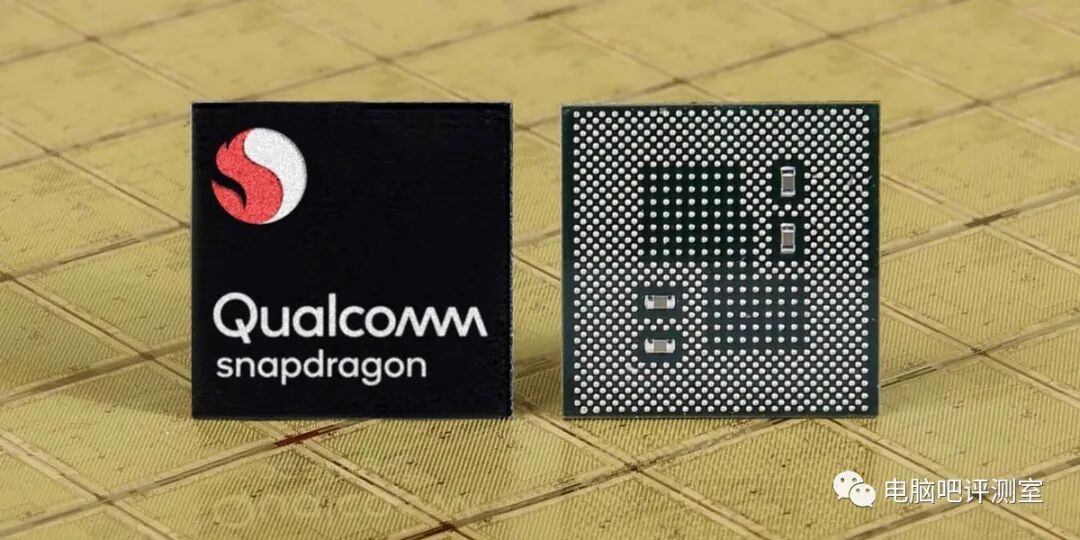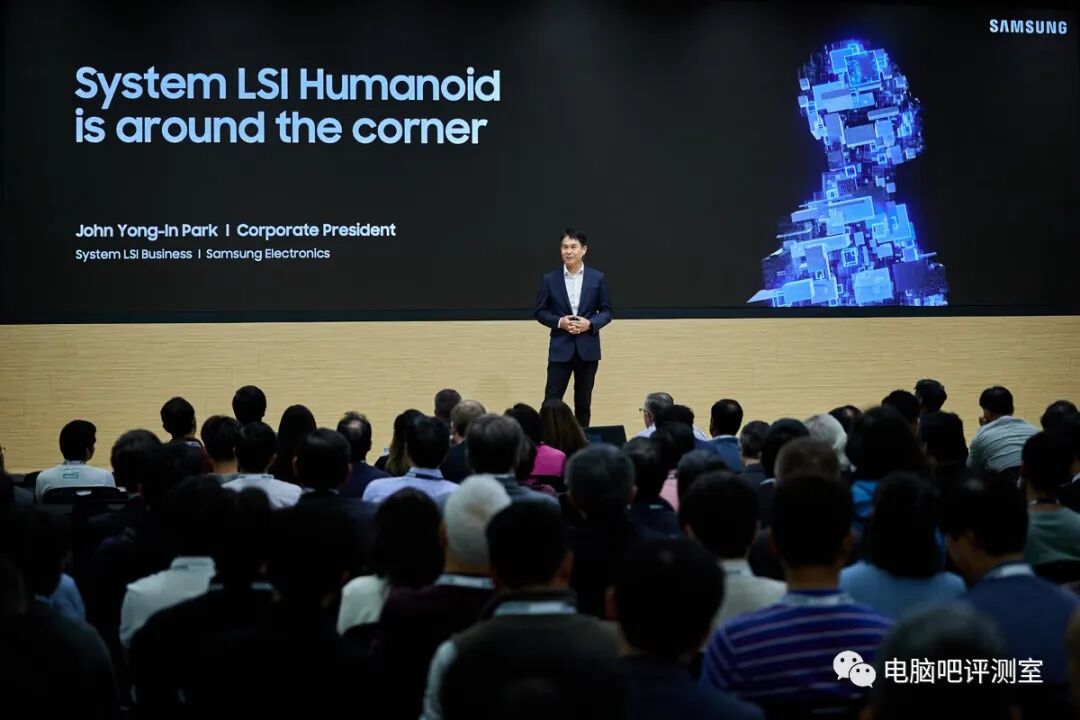News ① : Qualcomm’s third-generation Snapdragon 8 outperforms the A17 Pro in energy efficiency by 30%.
Qualcomm is set to launch its new flagship SoC, the highly anticipated third-generation Snapdragon 8 platform. According to recently leaked benchmark scores, this SoC performs quite well. However, unlike Apple’s latest A17 Pro, Qualcomm has opted not to use TSMC’s latest 3nm process node, instead choosing the more mature N4P process. Although Qualcomm has selected the most advanced chip manufacturing process, the third-generation Snapdragon 8 seems to be unaffected. Recently, some users revealed that compared to the A17 Pro, the third-generation Snapdragon 8’s energy efficiency is 30% higher. While in AnTuTu tests, the third-generation Snapdragon 8 is only 15% faster than the second-generation Snapdragon 8 in CPU performance, the GPU performance has increased by 40%, showing a clear advantage over the A17 Pro. Rumors suggest that the CPU of the third-generation Snapdragon 8 will adopt a 1+5+2 tri-cluster design, consisting of one Cortex-X4 super core, five Cortex-A720 large cores, and two Cortex-A520 small cores, while the GPU will be the Adreno 750. It is understood that Qualcomm is still tuning the third-generation Snapdragon 8 to achieve the best energy efficiency. To provide devices with longer battery life, Qualcomm may appropriately reduce the CPU performance of the third-generation Snapdragon 8 to improve power efficiency. Previous tests indicated that the A17 Pro, manufactured using TSMC’s 3nm process, showed limited performance improvements, but battery life remained largely unchanged, suggesting that the more advanced manufacturing process did not have a significant impact. If the overall performance of the third-generation Snapdragon 8 is comparable to that of the A17 Pro, it will make Android flagship models more competitive.
Rumors suggest that the CPU of the third-generation Snapdragon 8 will adopt a 1+5+2 tri-cluster design, consisting of one Cortex-X4 super core, five Cortex-A720 large cores, and two Cortex-A520 small cores, while the GPU will be the Adreno 750. It is understood that Qualcomm is still tuning the third-generation Snapdragon 8 to achieve the best energy efficiency. To provide devices with longer battery life, Qualcomm may appropriately reduce the CPU performance of the third-generation Snapdragon 8 to improve power efficiency. Previous tests indicated that the A17 Pro, manufactured using TSMC’s 3nm process, showed limited performance improvements, but battery life remained largely unchanged, suggesting that the more advanced manufacturing process did not have a significant impact. If the overall performance of the third-generation Snapdragon 8 is comparable to that of the A17 Pro, it will make Android flagship models more competitive.
Original link: https://www.expreview.com/90422.html
Also, let’s take a look at the smartphone “hardware”; Qualcomm’s next-generation smartphone SoC has new updates. According to the leaked benchmark information, the next-generation Snapdragon 8 Gen3’s main improvement is in the GPU area, with performance increasing by nearly 40%. According to benchmark results, the energy efficiency of the 8 Gen3 has already surpassed that of the A17 Pro. In fact, there are not many surprises in terms of performance; the progress of the last two generations of Apple has slowed down. The previous generation 8 Gen2 and 8 Gen2 Pro’s GPU performance already surpassed that of the same generation Apple SoCs, and this generation further improves GPU performance, so there should be no issues. However, the CPU may be weaker than the A17 Pro. The most significant change in the CPU upgrade is the new super core and the addition of another large core, keeping the total core count at 8. It remains to be seen how much the new super core and the additional large core will enhance performance.
News ② : Dimensity 9300 specifications leaked: 3.25GHz clock speed, GPU is Immortalis-G720.
Yesterday, digital blogger “Digital Chat Station” revealed some specifications of the Dimensity 9300 and indicated that in AnTuTu V10 testing, the Dimensity 9300’s performance is slightly stronger than that of the third-generation Snapdragon 8 platform. Although MediaTek plans to launch the Dimensity 9300 in the coming weeks, this SoC has not yet been exposed in benchmark testing. There are rumors that the inability to disclose benchmark scores may be related to thermal issues with the Dimensity 9300, but MediaTek firmly denies this claim. The MediaTek Dimensity 9300 has an 8-core CPU, adopting a 1* Cortex-X4 + 3*Cortex-X4 + 4*Cortex-A720 architecture, with the main core Cortex-X4 clocked at 3.25GHz. According to NOTEBOOKCHECK, the other Cortex-X4 cores operate at approximately 3.0GHz, while the Cortex-A720 cores operate at 2.0GHz. However, the above frequency settings are not final, and MediaTek may make targeted adjustments based on the performance of the third-generation Snapdragon 8 mobile platform. In terms of GPU, the Dimensity 9300 uses Arm’s Immortalis-G720 GPU architecture, which features DVS (Delayed Vertex Shading) functionality to reduce the bandwidth requirements for graphics rendering in mobile devices such as smartphones and tablets, thereby lowering gaming power consumption and improving gaming performance. Arm claims that the Immortalis-G720 theoretically improves performance by 15% compared to the previous generation and overall performance leads competitors by 20%.In terms of process technology, the Dimensity 9300 uses TSMC’s N4P process based on the 5nm process node. TSMC’s official information states that N4P offers an 11% performance improvement, a 22% energy efficiency improvement, and a 6% increase in transistor density compared to the earlier N5 process.The Dimensity 9300 is expected to be officially launched in November, with the first models reportedly being the vivo X100 series.
The MediaTek Dimensity 9300 has an 8-core CPU, adopting a 1* Cortex-X4 + 3*Cortex-X4 + 4*Cortex-A720 architecture, with the main core Cortex-X4 clocked at 3.25GHz. According to NOTEBOOKCHECK, the other Cortex-X4 cores operate at approximately 3.0GHz, while the Cortex-A720 cores operate at 2.0GHz. However, the above frequency settings are not final, and MediaTek may make targeted adjustments based on the performance of the third-generation Snapdragon 8 mobile platform. In terms of GPU, the Dimensity 9300 uses Arm’s Immortalis-G720 GPU architecture, which features DVS (Delayed Vertex Shading) functionality to reduce the bandwidth requirements for graphics rendering in mobile devices such as smartphones and tablets, thereby lowering gaming power consumption and improving gaming performance. Arm claims that the Immortalis-G720 theoretically improves performance by 15% compared to the previous generation and overall performance leads competitors by 20%.In terms of process technology, the Dimensity 9300 uses TSMC’s N4P process based on the 5nm process node. TSMC’s official information states that N4P offers an 11% performance improvement, a 22% energy efficiency improvement, and a 6% increase in transistor density compared to the earlier N5 process.The Dimensity 9300 is expected to be officially launched in November, with the first models reportedly being the vivo X100 series.
Original link: https://www.expreview.com/90410.html
Increasing the number of large cores seems to be a consensus among this generation of smartphone SoC manufacturers. MediaTek’s increase in large core count is much more exaggerated than Qualcomm’s… four X4 super cores + four A720 large cores, no need for small cores at all, plus the new architecture G720 GPU scaled to MC12, performance should be very powerful. The previous generation Dimensity 9200 and 9200+ were firmly held back by the 8 Gen2, and it seems MediaTek is looking to redeem itself. However, with such a terrifying scale and no small cores to assist with low-load tasks, power consumption scheduling is of utmost importance. The peak power consumption of this chip will definitely be explosive! It remains to be seen how the partnering smartphone manufacturers will manage the scheduling.
News ③ : Samsung officially releases Exynos 2400, introducing RDNA 3 architecture GPU, supporting bidirectional satellite communication.
Today, Samsung announced the launch of the new generation mobile processor Exynos 2400. Samsung has made several improvements over the Exynos 2200, with CPU performance increasing by 70%, and AI workload acceleration improving an astonishing 14.7 times, while the GPU introduces the RDNA 3 architecture, providing enhanced gaming and ray tracing performance. The Exynos 2400 features a 1+2+3+4 quad-cluster architecture for its CPU, including 1 super core ([email protected]), 2 high-frequency large cores ([email protected]), 3 low-frequency large cores ([email protected]), and 4 small cores ([email protected]), totaling 10 cores. Since the Exynos 2400’s CPU will transition to the latest Arm V9.2 cores, it means it will only support 64-bit, and Qualcomm’s upcoming third-generation Snapdragon 8 platform will adopt the same strategy.The GPU of the Exynos 2400 uses the Xclipse 940, based on the RDNA 3 architecture. Samsung also demonstrated at the System LSI Tech Day 2023 event how ray tracing technology (including global illumination, more accurate reflections, and shadow rendering) enhances the realism of games while significantly improving ray tracing performance. However, Samsung did not provide specific specifications for the Xclipse 940, but rumors suggest it is equipped with 6 WGPs and 12 CUs, doubling the scale compared to the Xclipse 920 (3 CUs) used in the Exynos 2200. According to leaked testing information, the GPU performance of the Exynos 2400 is not as strong as that of the second-generation Snapdragon 8 platform equipped with the Adreno 740, but Samsung still has time for some optimization work.
The Exynos 2400 features a 1+2+3+4 quad-cluster architecture for its CPU, including 1 super core ([email protected]), 2 high-frequency large cores ([email protected]), 3 low-frequency large cores ([email protected]), and 4 small cores ([email protected]), totaling 10 cores. Since the Exynos 2400’s CPU will transition to the latest Arm V9.2 cores, it means it will only support 64-bit, and Qualcomm’s upcoming third-generation Snapdragon 8 platform will adopt the same strategy.The GPU of the Exynos 2400 uses the Xclipse 940, based on the RDNA 3 architecture. Samsung also demonstrated at the System LSI Tech Day 2023 event how ray tracing technology (including global illumination, more accurate reflections, and shadow rendering) enhances the realism of games while significantly improving ray tracing performance. However, Samsung did not provide specific specifications for the Xclipse 940, but rumors suggest it is equipped with 6 WGPs and 12 CUs, doubling the scale compared to the Xclipse 920 (3 CUs) used in the Exynos 2200. According to leaked testing information, the GPU performance of the Exynos 2400 is not as strong as that of the second-generation Snapdragon 8 platform equipped with the Adreno 740, but Samsung still has time for some optimization work. Samsung has also designed new AI tools for upcoming smartphones and demonstrated them using the Exynos 2400, achieving local text-to-image generation. Additionally, the Exynos 2400 supports bidirectional satellite communication, compatible with NB-IoT (Narrowband IoT) and NTN (Non-Terrestrial Network) technologies. Samsung, in collaboration with Skylo Technologies, showcased a video of this feature, indicating that the new Galaxy S24 series will also have bidirectional satellite communication capabilities.Samsung is expected to launch the Galaxy S24 series in the first quarter of next year, with rumors suggesting that the Exynos 2400 will be used in the Galaxy S24 and Galaxy S24+ models in certain regions, while the Galaxy S24 Ultra is expected to feature Qualcomm’s third-generation Snapdragon 8 platform.Original link: https://www.expreview.com/90372.html
Samsung has also designed new AI tools for upcoming smartphones and demonstrated them using the Exynos 2400, achieving local text-to-image generation. Additionally, the Exynos 2400 supports bidirectional satellite communication, compatible with NB-IoT (Narrowband IoT) and NTN (Non-Terrestrial Network) technologies. Samsung, in collaboration with Skylo Technologies, showcased a video of this feature, indicating that the new Galaxy S24 series will also have bidirectional satellite communication capabilities.Samsung is expected to launch the Galaxy S24 series in the first quarter of next year, with rumors suggesting that the Exynos 2400 will be used in the Galaxy S24 and Galaxy S24+ models in certain regions, while the Galaxy S24 Ultra is expected to feature Qualcomm’s third-generation Snapdragon 8 platform.Original link: https://www.expreview.com/90372.html
Samsung’s next-generation flagship smartphone SoC has also been revealed. Unlike the previous generation, Samsung has made significant improvements, increasing the number of large cores to 1 super core + 5 large cores, along with 4 small cores, achieving a total of 10 cores, making it the only product in this generation of smartphone SoCs to reach a 10-core configuration. Additionally, previous rumors about a breakdown in cooperation between Samsung and AMD have been directly refuted by the appearance of the Exynos 2400. This RDNA3 architecture mobile GPU has also scaled several times compared to the previous generation, indicating that this generation of smartphone SoC manufacturers are all striving for significant advancements. It remains to be seen how much improvement will be achieved!
Remember to like this article if you find it interesting!Join the computer discussion group: 386615430Join the official review group of Computer Bar: 798545305Follow Bilibili @ Computer Bar Review RoomNote: This article is reprinted from the internet (links above). Any images or logos appearing in this article belong to their legitimate owners; this article is for informational purposes only. If there is any infringement, please leave a message in this article. The views and opinions expressed in this article do not represent those of the Computer Bar Review Room.
